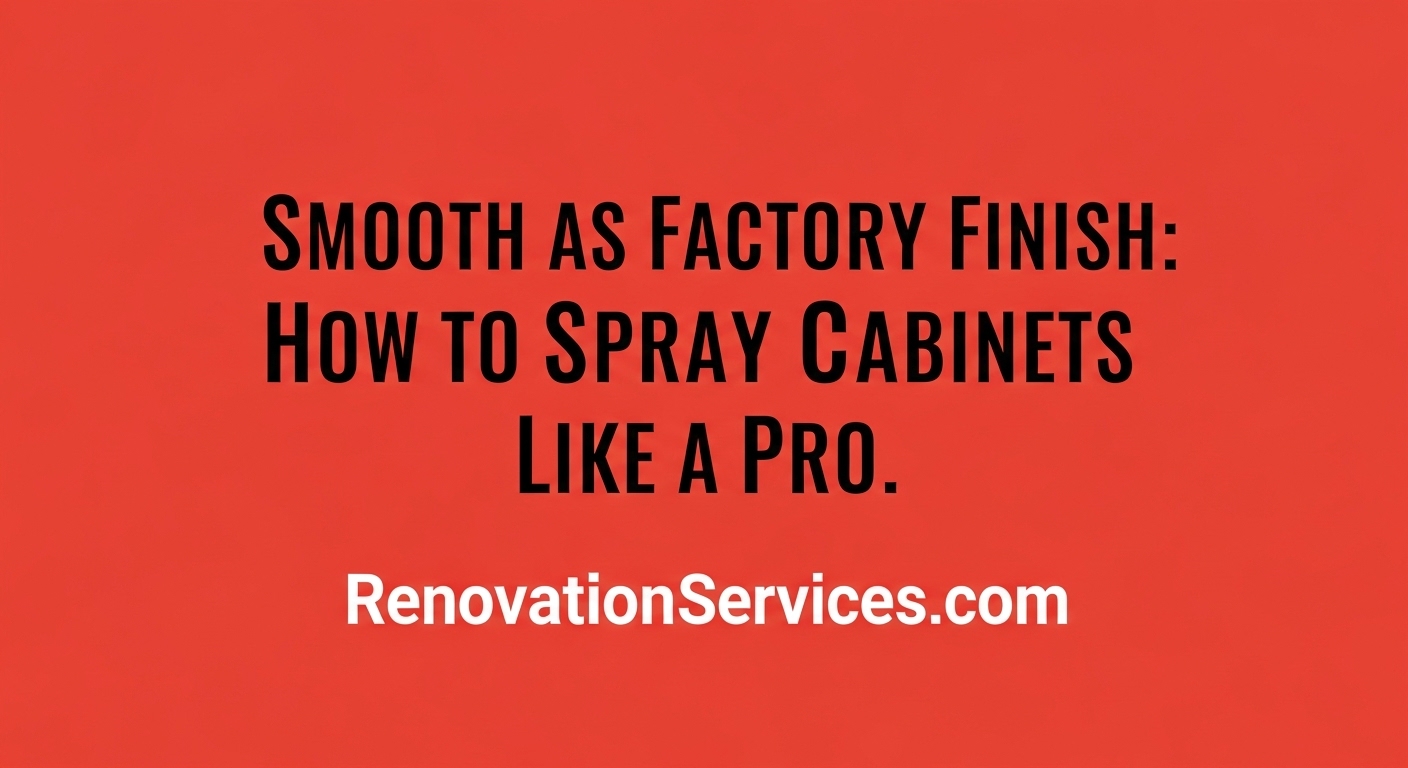Smooth as Factory Finish: How to Spray Cabinets Like a Pro
From taping off your fridge to dialing in turbine PSI, two NYC homeowners show every triumph—and one paint-gun mishap—on the way to showroom-grade cabinets that saved them $30 000 in replacement costs.
Meet Paula & the Pistachio Predicament
Paula’s 1998 maple doors had yellowed into a hue she jokingly called “pistachio yogurt.” Replacing 34 doors and 17 drawer fronts would run at least $23 000, not including surprise plumbing moves. Instead, she decided to spray cabinets bright satin white—right inside her Smithtown cape. Her secret weapon: a budget-friendly $289 HVLP turbine sprayer, 600 sq ft of 3-mil plastic, and a weekend of meticulous prep.
Paula’s journey—complete with one memorable nozzle clog—forms the backbone of this tutorial. We’ll also drop in a quick side-story from Eddie, a Brooklyn brownstone owner who used oil-based lacquer for a mirror-gloss navy finish.
Choosing the Right Sprayer — Turbine vs Airless vs Compressor
| Sprayer Type | Cost to Buy | Typical Tip Size | Pros | Cons |
|---|---|---|---|---|
| 3-Stage Turbine HVLP | $250–$450 | 1.3 mm | Low overspray, plugs standard outlet, fine atomization | Slow for large walls, hose length limit 25 ft |
| Airless w/ Fine-Finish Tip | $400–$700 | 208 FF | Fast, handles thick enamel without thinning | Loud, more overspray, must mask entire room |
| Compressor + LVLP Gun | $150 + compressor | 1.4 mm | Cheapest if you own compressor, great gloss | Requires 7 CFM@40 psi; tanks cycle often |
Pro shorthand: For apartments, choose turbine (low overspray). For detached garages, airless rocks. For brownstone garden-level shops with compressors on hand, LVLP shines.
Stage 1 — “See Ya, Grease” Degloss
TSP-sub dwell » 15 min
• Scrub doors & frames
• Rinse twice
• Scuff-sand 220-grit sponge
• Wipe with de-lint cloth + denatured alcohol
Stage 2 — Number Every Door
Blue-tape tag » 1–20
• Mask hinge cups
• Sharpie numbers in hinge recess
• Snap phone photo for backup
Stage 3 — Pop-Up Spray Booth
ZipWall time » 22 min
• 3-mil plastic floor-to-ceiling
• Box-fan + MERV-13 filter exhaust
• Doorway zipper + foam sill
Stage 4 — Bonding Primer Fog Coat
Tip size » 1.3 mm
• Thin primer 10 % H₂O
• 6-inch fan pattern
• Flash dry 40 min
• Scuff 320-grit pad
Stage 5 — Finish Coats ×2
Viscosity cup » 21 sec / 70 °F
• Satin acrylic-alkyd enamel
• Light pole-sand 400-grit between coats
• Cure 7 days before heavy use
Eddie’s High-Gloss Navy Brownstone Cabinets
Eddie wanted a deep navy gloss so reflective guests could check hair in the door panels. He used a compressor-fed LVLP gun at 25 psi, shooting a two-part oil-modified polyurethane. Key stats:
- CFM draw: 6.8 @ 25 psi
- Flash time between coats: 2 hrs
- Gloss meter: 92 GU @ 60° angle
Total material: $180. Gloves and patience: priceless. He rented a UV-curing lamp to accelerate hard-cure to 48 hrs.
DIY vs Pro vs Replacement—Return on Investment
| Option | Cash Outlay | Added Appraisal | Net Gain |
|---|---|---|---|
| DIY spray cabinets | $700 | $12 000 | + $11 300 |
| Pro spray cabinets | $3 600 | $12 000 | + $8 400 |
| Full cabinet replacement | $23 000 | $18 000 | – $5 000 |
Troubleshooting Atlas — 8 Problems & Fixes
| Symptom | Likely Cause | Rapid Fix |
|---|---|---|
| Orange-peel texture | Viscosity too thick | Thin 5 %, increase gun air 1 psi |
| Runs & sags | Spray too close | Back-roll with foam roller, flash next coat lighter |
| Fish-eyes | Silicone contamination | Wipe with wax-grease remover; spot prime shellac |
| Dust nibs | Low airflow | Add second exhaust fan; tack cloth before final coat |
| Poor adhesion | Skipped scuff sand | Let cure 24 hrs, wet-sand, re-prime bonding coat |
| Blush whitening | High humidity > 75 % | Run dehumidifier, sand blush, re-coat thin |
| Bristle lines | Back-brushed while tacky | Light sand 320-grit, mist second coat |
| Yellowing over time | Solvent-borne alkyd | Use acrylic-alkyd or add UV blocker top coat |
Owner-Care Timeline (First 36 Months)
- Day 7: Light door handling OK; avoid cleaners.
- Month 1: Full cure—wash with mild dish soap.
- Month 6: Inspect hinge screws; tighten.
- Year 1: Wipe with citrus-free cleaner; apply micro-crystalline wax for gloss finishes.
- Year 2: Spot-touch any water drips; re-caulk sink splash area.
- Year 3: Optional single top-coat spray refresh; costs $1 / sq ft if booth reused.
More Rapid-Fire Q & A
Start
│
├─ Own spray gun? ─ No ─► Rent HVLP ($40/day)
│ │
│ ▼
│ Practice on scrap door
│
└─ Yes
│
├─ Doors numbered? ─ No ─► Label doors!
│ ▲
│ |
└─ Booth built? ─ No ─► Hang ZipWall & fan
▼
Ready to Spray!
Paula & Eddie’s Final Verdict
Both homeowners cut their cabinet budgets by more than 80 %. Paula’s satin white brightened meal-prep selfies; Eddie’s deep-navy gloss pops against aged-oak flooring. Each project required patience, a respirator, and respect for dry-time math. Your turn?
No Time? Let Us Spray Cabinets for You
Our mobile booth sets up in 30 minutes and leaves zero odor. We finish two-coat satin or high-gloss packages in a single business day. Call 347-455-1741 or email info@renovationservices.com for a color consult.






